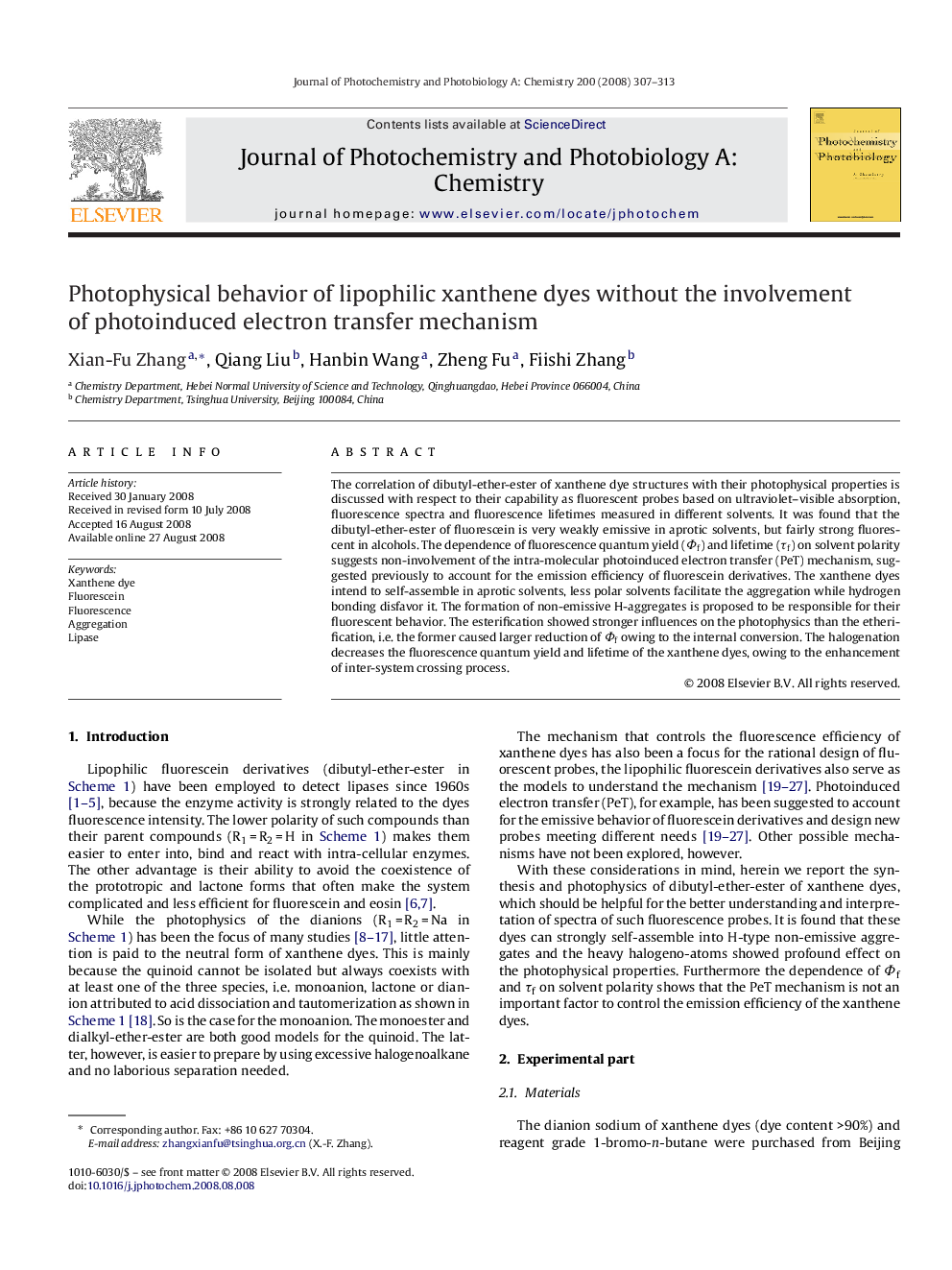| Article ID | Journal | Published Year | Pages | File Type |
|---|---|---|---|---|
| 29002 | Journal of Photochemistry and Photobiology A: Chemistry | 2008 | 7 Pages |
The correlation of dibutyl-ether-ester of xanthene dye structures with their photophysical properties is discussed with respect to their capability as fluorescent probes based on ultraviolet–visible absorption, fluorescence spectra and fluorescence lifetimes measured in different solvents. It was found that the dibutyl-ether-ester of fluorescein is very weakly emissive in aprotic solvents, but fairly strong fluorescent in alcohols. The dependence of fluorescence quantum yield (Φf) and lifetime (τf) on solvent polarity suggests non-involvement of the intra-molecular photoinduced electron transfer (PeT) mechanism, suggested previously to account for the emission efficiency of fluorescein derivatives. The xanthene dyes intend to self-assemble in aprotic solvents, less polar solvents facilitate the aggregation while hydrogen bonding disfavor it. The formation of non-emissive H-aggregates is proposed to be responsible for their fluorescent behavior. The esterification showed stronger influences on the photophysics than the etherification, i.e. the former caused larger reduction of Φf owing to the internal conversion. The halogenation decreases the fluorescence quantum yield and lifetime of the xanthene dyes, owing to the enhancement of inter-system crossing process.
